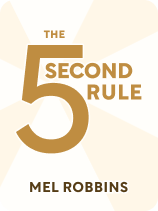

This article is an excerpt from the Shortform book guide to "The 5 Second Rule" by Mel Robbins. Shortform has the world's best summaries and analyses of books you should be reading.
Like this article? Sign up for a free trial here.
What are your passions? How can you pursue your passions using the 5 Second Rule?
Once you stop waiting to make life changes, you can begin working toward one specific change: spending more time on your passions. In The 5 Second Rule, Mel Robbins advises using the Rule for this because it’s often difficult to set aside time for your passions.
Let’s look at how to pursue your passions by making time for them.
Spend More Time on Your Passions
According to Robbins, the Rule can help you get past your overthinking and take concrete steps to pursue your passions. For example, if you have dreams of working in a big art museum but you currently live in a small town with few artistic resources, you may feel unprepared to move away even though you know it’s what you need to do to follow your desired career path. In this case, you can use the Rule to get yourself to look up apartment options in bigger cities with lots of career opportunities in the arts.
(Shortform note: Perhaps the biggest reason that we neglect to spend time on our passions and fail to take the concrete steps that Robbins recommends is that we internalize values from the culture around us. This causes us to spend our time in ways that other people claim have “value” rather than in ways that give us intrinsic satisfaction. In The Way of Integrity, Martha Beck argues that such misalignment with our true desires is the number one reason we suffer from chronic psychological misery.)
How to Discover and Act on a Passion
The first step in spending more time on your passions is to figure out what your passions are. Robbins states that you should consider:
- What are you curious about? Do you find yourself wondering about a specific topic, how something works, or how to do something? This curiosity may lead you to a pursuit that excites you.
- What do you see in others’ lives that you wish you had? For example, if you find yourself wishing you could be more like your friend who sings in a choir on the weekends, your passion may be a similar kind of creative outlet.
Once you identify an interest, Robbins suggests you act on your gut feelings to learn more about it. If you feel hesitant or find it difficult to set aside time to explore this interest, use the Rule to get yourself to begin researching your potential passion.
After identifying what you’re passionate about, you can begin to pursue that passion. Robbins states that the more you practice the skills needed for your passion, the easier it’ll be to set aside time for it. This is because, as with daily tasks, starting is the most difficult part. Eventually, you might be able to turn your passion into a full-time job.
Consider a Wide Range of Passions
When identifying your passions, take care not to emotionally invest too heavily in any one pursuit. In Designing Your Life, Bill Burnett and Dave Evans argue that many people make themselves unhappy because they believe that the emotional attachment they have to a pursuit is unique to that pursuit alone—in other words, they believe it’s their sole passion and life purpose. They commit too heavily to that life path, sacrificing other things that matter to them, and end up unhappy.
In reality, we each have a multitude of potential passions that could form the basis of a fulfilling life. The specific pursuit you’re passionate about doesn’t matter as much as whether that pursuit is satisfying and aligns with your beliefs and values.
With this in mind, Burnett and Evans suggest keeping a journal to track the multitude of topics you’re curious about, which would include the passions you envy in the lives of others. If you need even more passions to consider, draw from positive experiences that stick out in your memory from your entire life. Reflect on what these motivating passions have in common, and use that information to brainstorm even more possible passions.
Explore a Wide Range of Passions
Once you’ve identified several interests, Burnett and Evans offer specific advice on how to go about exploring them. First, interview people currently living the lifestyle you’re seeking to adopt to further discover whether you’ll find that lifestyle satisfying. Second, conduct experimental trials of the passions you’re thinking about committing to—dip your toe in the lifestyle you’re considering by taking an internship, doing volunteer work, or taking a trip to a place you’re thinking about moving.
Burnett and Evans also argue that these experiments will make it easier for you to turn your passions into a full-time job, if that’s what you’re interested in. 80% of available jobs get filled entirely internally within organizations, without ever accepting formal applications. These experimental trials give you the networking connections you need for organizations to consider you for these unlisted employment opportunities.

———End of Preview———
Like what you just read? Read the rest of the world's best book summary and analysis of Mel Robbins's "The 5 Second Rule" at Shortform.
Here's what you'll find in our full The 5 Second Rule summary:
- Why counting down from five to one will help you assert agency over your life
- The different ways you can use the 5-Second Rule
- How to figure out what your passions are and work toward them






